Wild perspectives: a twilight nature encounter at Snipe Dales
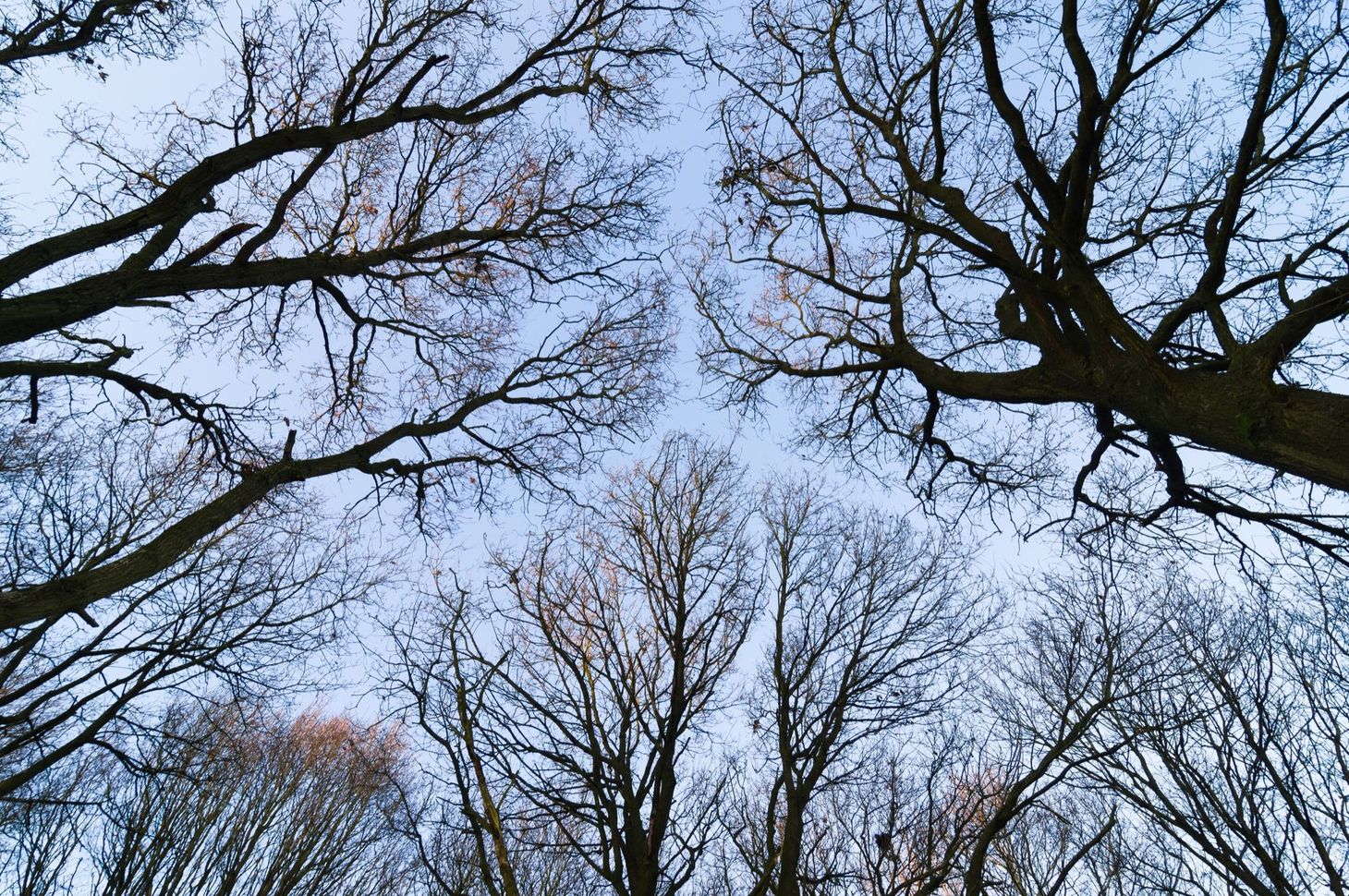
One of the last things I did in 2019 was to go for a walk in the woods, and I caught a glimpse of the wild perspectives that govern hidden corners of our world.
It was to be a walk in search of some birds to photograph, but it ended up teaching me a thing or two about perspective and empathy.
I’d walked south from Horncastle beside a busy road, then through a managed deer park where a small herd of skittish fallow deer regarded me from a distance. If it can be said that the red deer of the Scottish Highlands live in an artificial landscape, then these animals were even more imprisoned – forest beings living in a small, micromanaged world of fences and tarmac drives, molehills and lawns, mature trees and jackdaws. I watched the hinds and a few large calves for a few minutes as they looked back at me, gazes unflinching, thoughts unknowable. Were they happy in their easy but limited world, or did the tidal force of what George Monbiot terms ‘ecological boredom’ tug at their minds too, as it tugs at us all on some deep level?
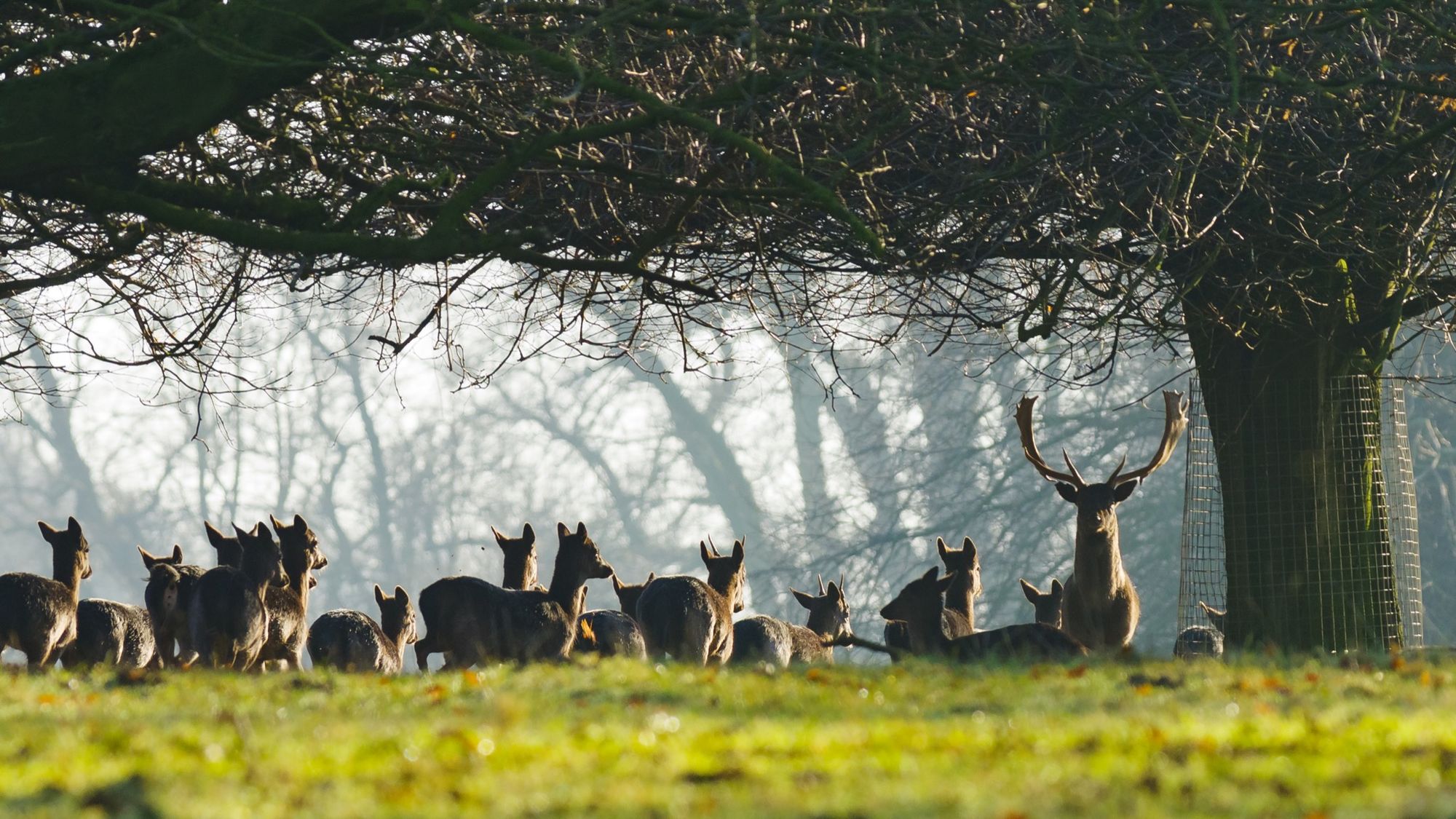
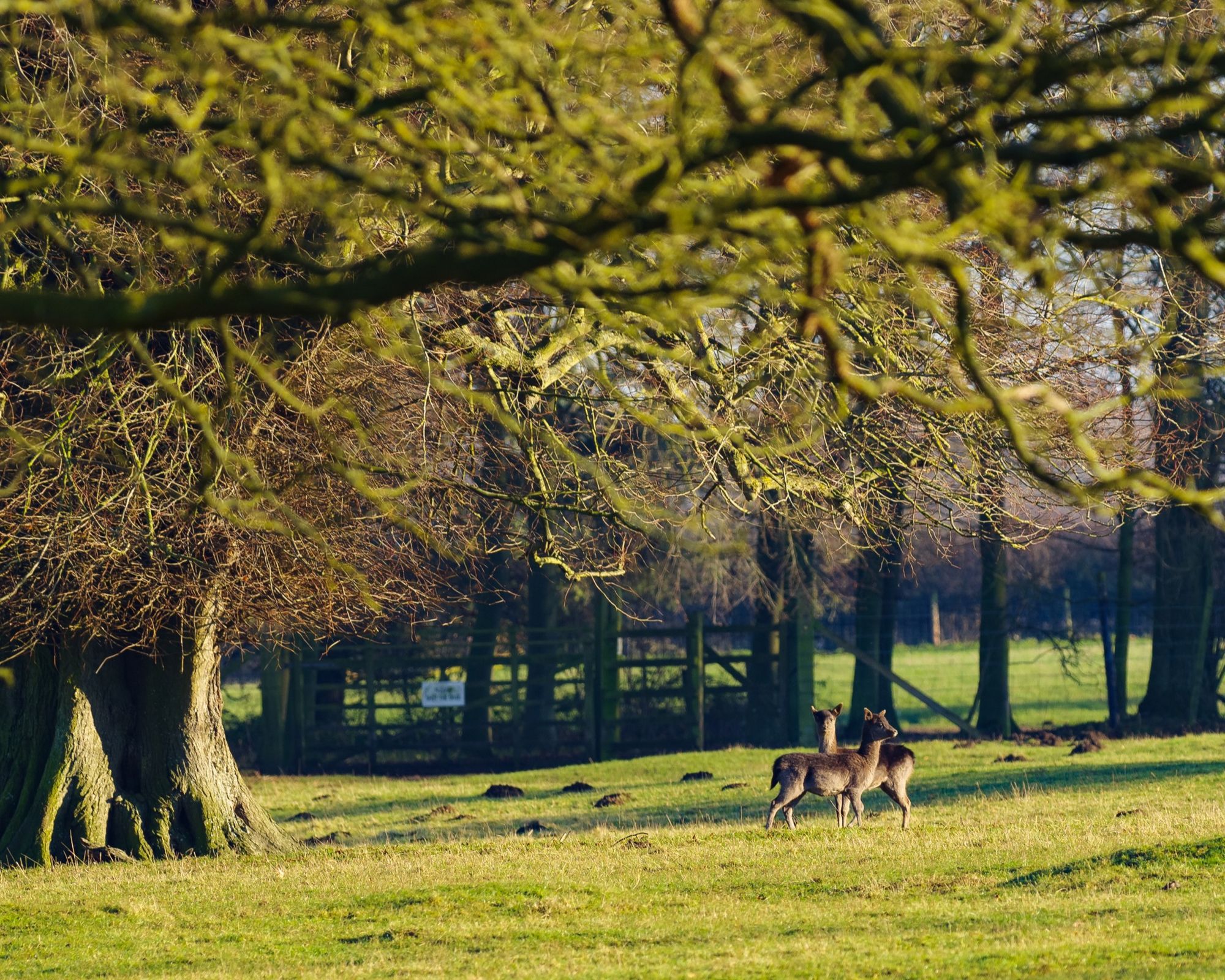
I walked on, across chemical-saturated farmland to a place that I’ve come to know as an oasis.
On my first few visits to Snipe Dales, I failed to see its beauty or understand its importance. Snipe Dales is a small nature reserve near Hagworthingham in Lincolnshire, consisting of a valley system around a network of chalk streams. Part of the reserve is wooded; part is wetland; part is scrubby meadow, maintained by conservation grazing. There are plenty of fences, stiles and gates. The footpaths are popular with dog walkers, and the woodland is not terribly exciting – at first glance, anyway. Most of the wooded areas are either former forestry plantations or fairly new woodlands dominated by young trees. There is no ancient forest here. It’s as far from untouched nature as anywhere.
So, the first time I visited, years ago, I hiked through and thought ‘meh’. There were no grand, gnarled oaks to fire my imagination, and to my untrained eye the habitats looked only marginally better than the intensive farmland surrounding it on all sides. But in the years since that first visit I’ve learned to see and hear.
I entered Snipe Dales from the south as the sun began to tilt towards the horizon, flooding the wall of trees ahead with hard golden light.
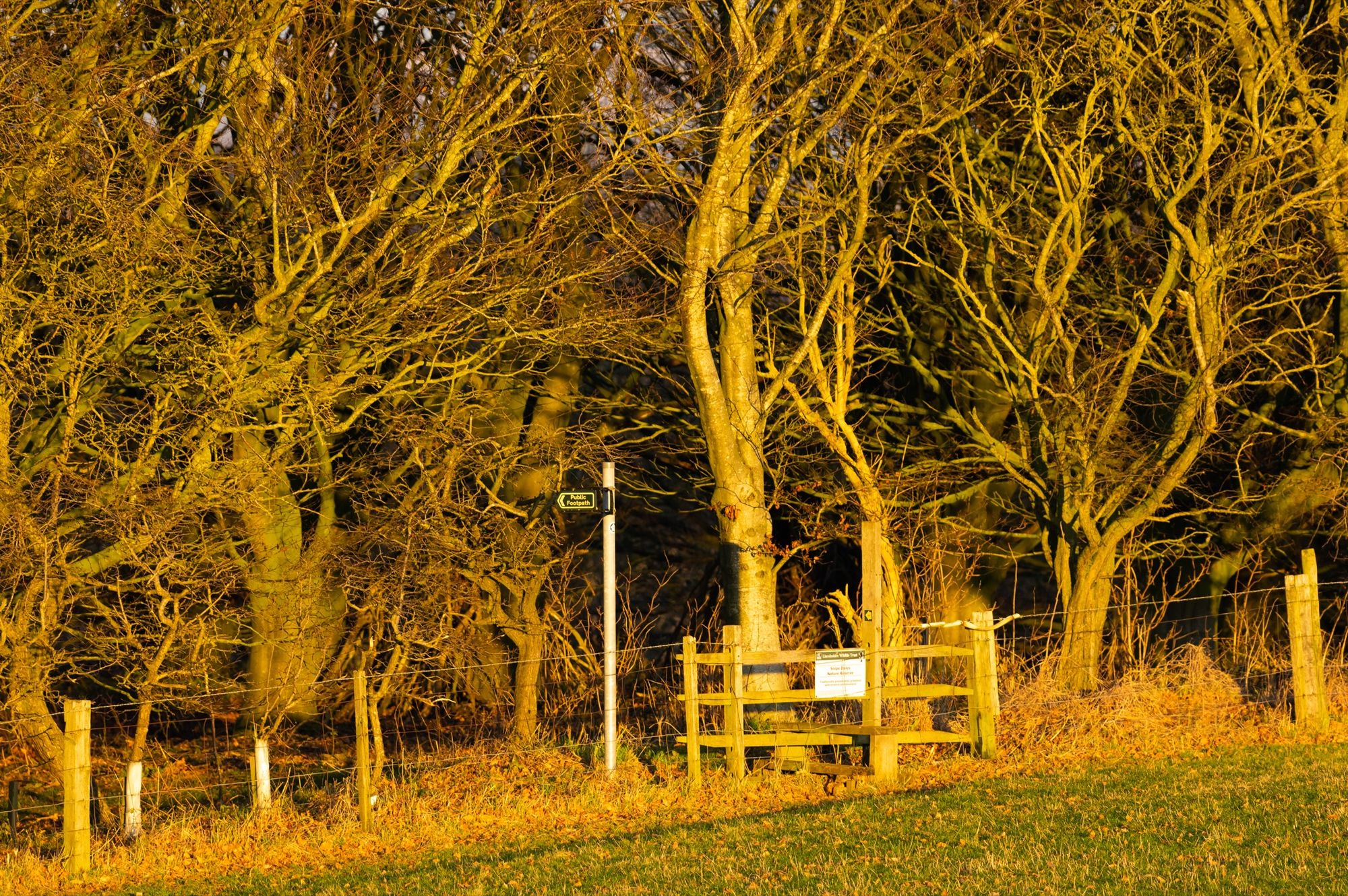
The landscape on the other side looked very different. Snipe Dales offers a glimpse of how the Lincolnshire Wolds would have looked centuries ago. The open hillside dropped down to a narrow stream, bordered by stands of thorn, rose, alder and birch. Although the grassland was deep in its winter slumber, in my imagination I could see the colourful flowers that would sprout through once more in a few months, feeding the clouds of insects and the birds in turn. I saw two ponies munching on tufts of grass. A noticeboard told me that this hardy, traditional breed had been chosen for conservation purposes. Although there are fences to keep the animals where the reserve managers want them, this is nothing like modern pastoral farming where heavier grazing pressure would obliterate the fragile biodiversity.
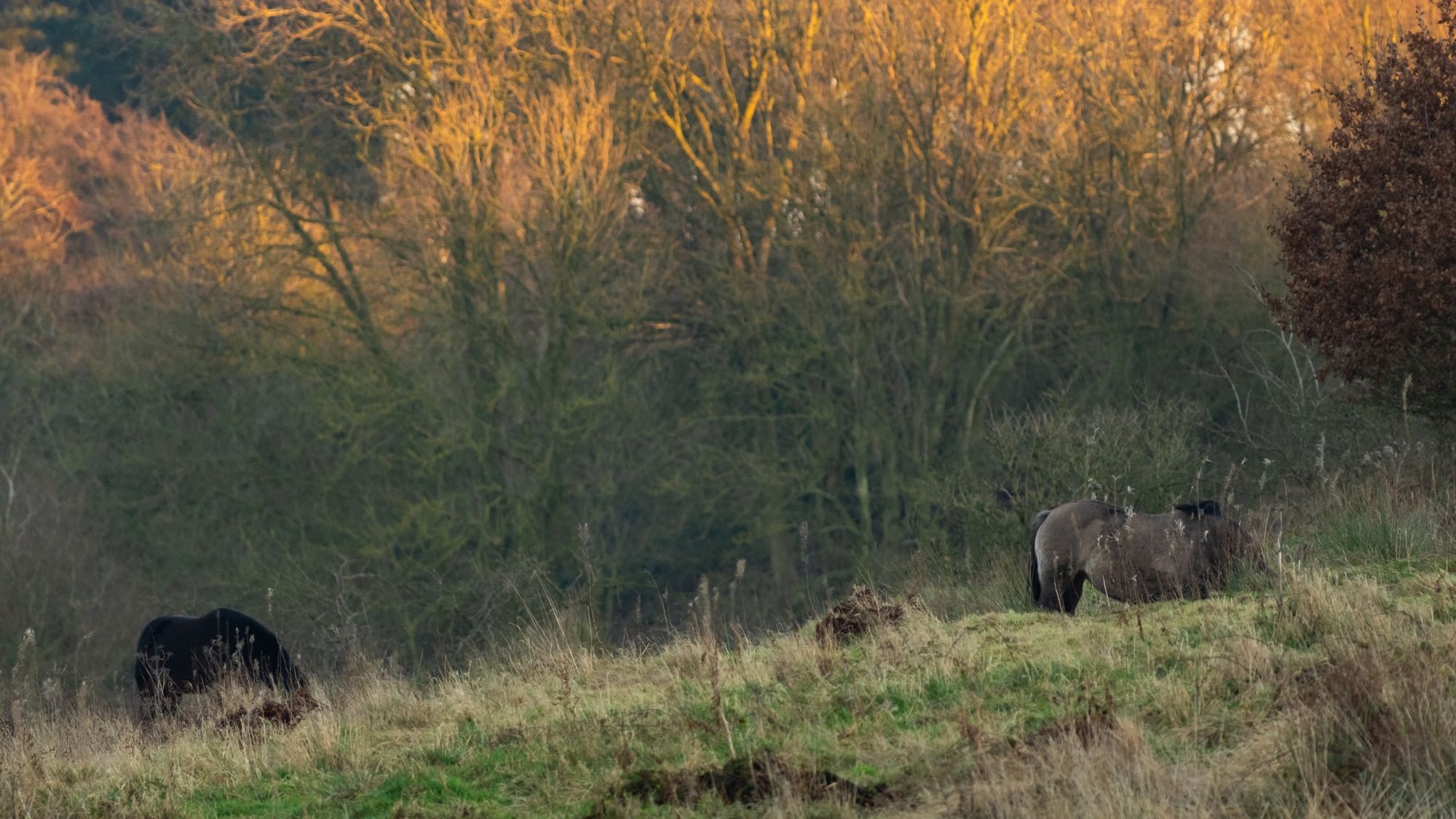
I paused at the top of the far hill and looked back down on the valley. Sooner or later, as I had expected, I caught sight of a buzzard sitting in a tree several hundred metres away. Through my long lens I watched it scan the streambank. It looked in my direction once or twice, not in the least upset by my presence.
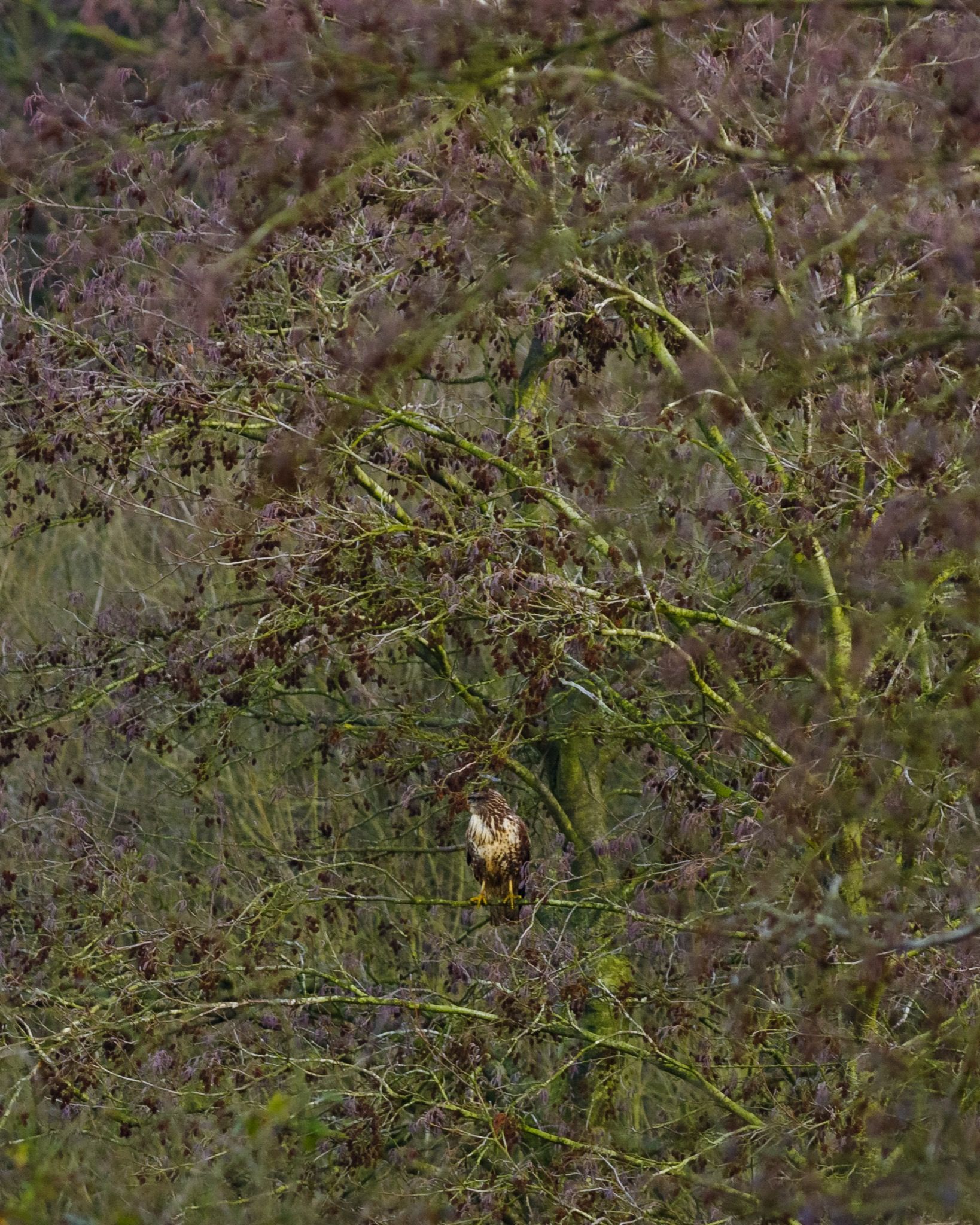
The buzzard’s perspective on this landscape was utterly different to my own – perhaps narrower, perhaps much broader. The buzzard knows every breath of the wind that ruffles her feathers. She knows the light and the infinitesimal movement of prey beneath a distant frond of bracken. She sees the fences that constrain the grazing ponies, and also those that keep the deer from straying, only a few kilometres away – fences with a very different purpose, but both fences nevertheless. Does the buzzard see the emptiness in the vast fields beyond the lip of the stream valley where snipe and woodcock hide close to the boggy ground?
I wondered if shifting baseline syndrome affected the buzzard’s view of the landscape as much as it affected mine. Did she choose to hunt along this particular stream valley just because this is where the prey was to be found, or had something in the barren silence beyond driven her to this refuge? Did she see any distinction between the two worlds at all, as I did, or was her viewpoint infinitely more nuanced?
Most people find it convenient to assume that the behaviour of animals is guided by dumb instinct, but what of the things that these other minds know, learn, and remember? Perhaps it’s hubris to assume that we know more than they do. As I watched the buzzard and she watched me, I thought it likely that she understood far more than I did about this landscape.
The light was failing fast and I’d been too caught up in the view through my lens to pay attention to my camera settings. When the buzzard took off and swooped into the dense woodland beyond, my shutter speed was far too slow and the shots I managed to capture were blurred and grainy. Later, when processing the raw files, I found myself dissatisfied by the technically poor images. On deeper reflection I decided to keep them after all. For me they communicate the essence of this creature I shared a few minutes with.
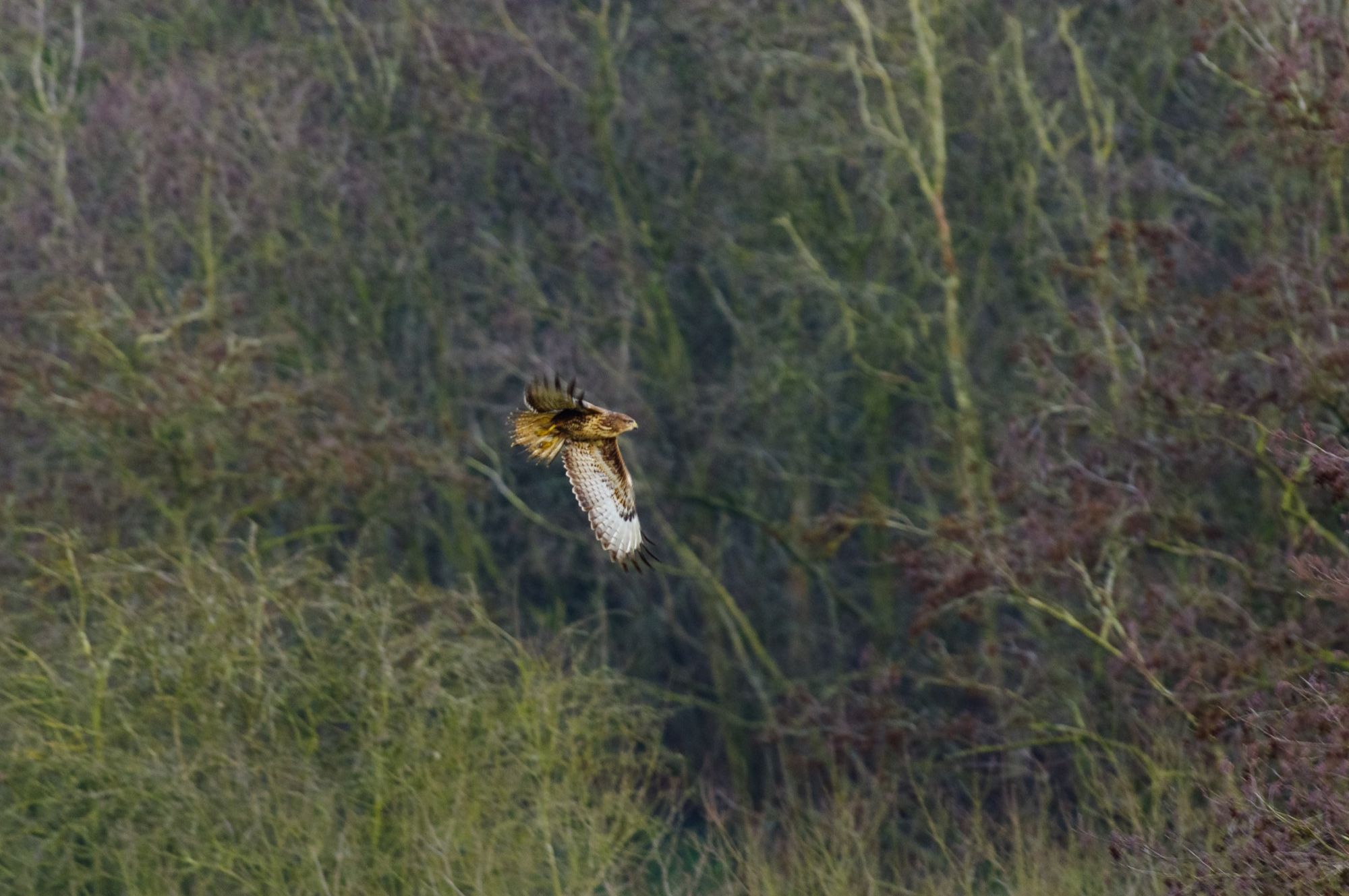
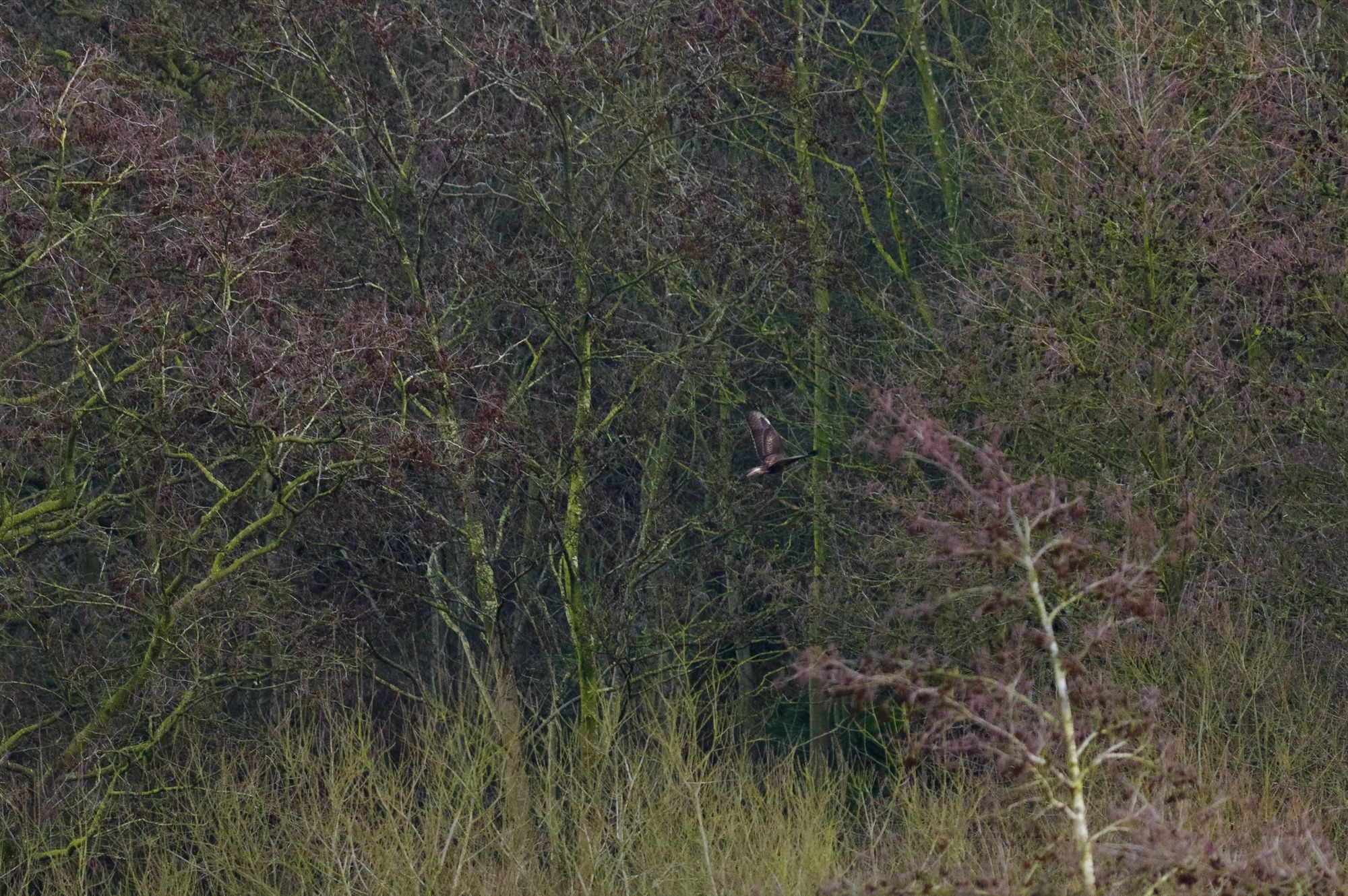
My walk took me through the woods as twilight dropped over the landscape, changing its character and stoking my imagination. The marshes flared with sunset’s afterglow. Wind whipped the treetops, blurring my exposures. I paused at a copse of white poplar and oak that I’d always walked past before, but this time I took a moment to look up, and witnessed the pleasingly harmonious patterns of crown shyness in the canopy. A grey squirrel bridged the gap with a leap as I watched. In my mind’s eye it was a red squirrel and the ghost of a pine marten watched it hungrily from a shadow, unobserved. I wondered if the buzzard would care if it caught a red squirrel or a grey one.
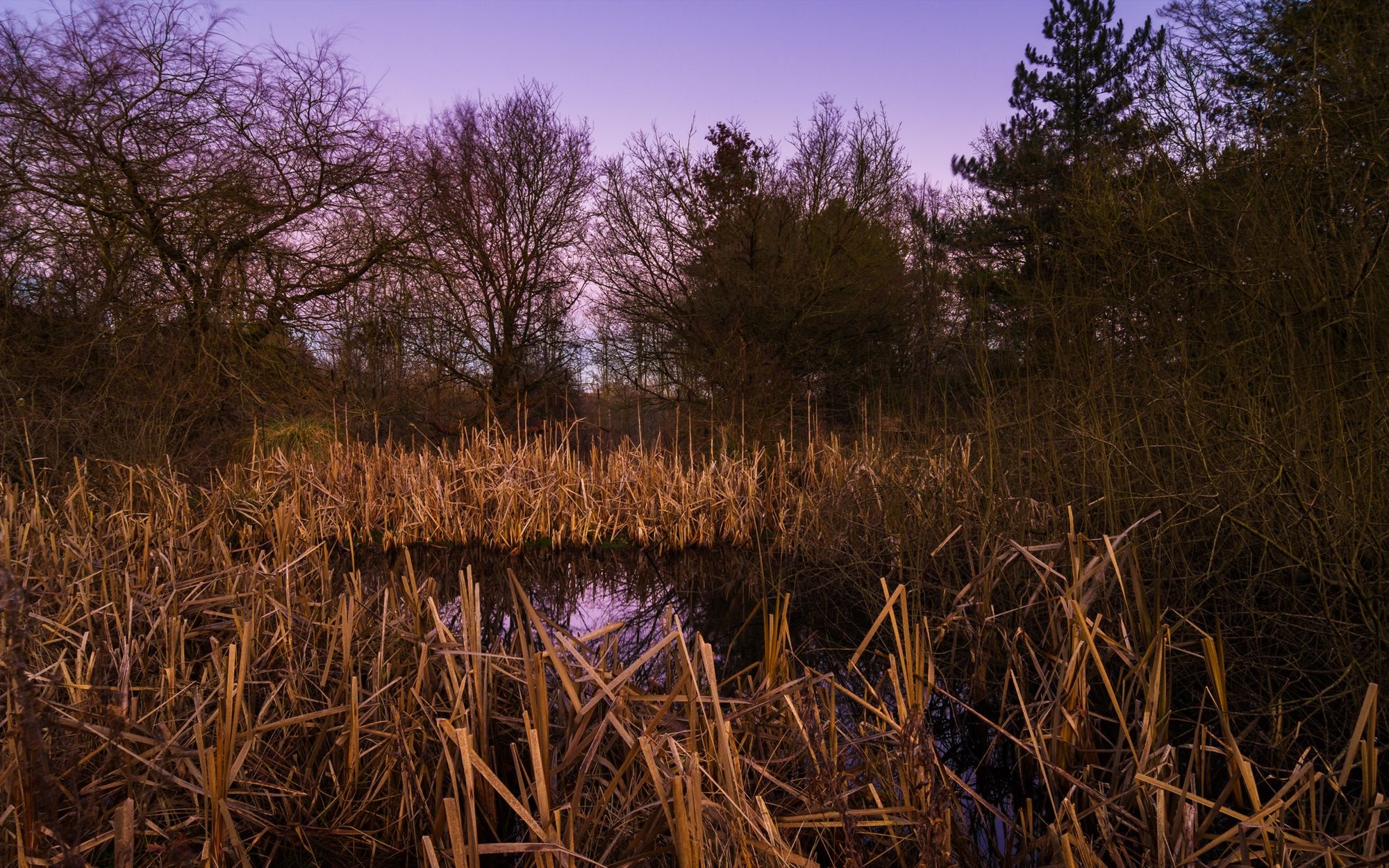
My own ecological boredom, seldom too far away since I had first become aware of it, had been appeased for the hour I spent in Snipe Dales around dusk. Much was missing, but much was also present. Twilight offered the chance to see and hear a little more. Perhaps when we truly observe a wild creature, try to see the world through its eyes, we get a little closer to a wilder perspective and help to build empathy with nature. Is that the key to solving all the world’s problems? Probably not – but it’s a start.
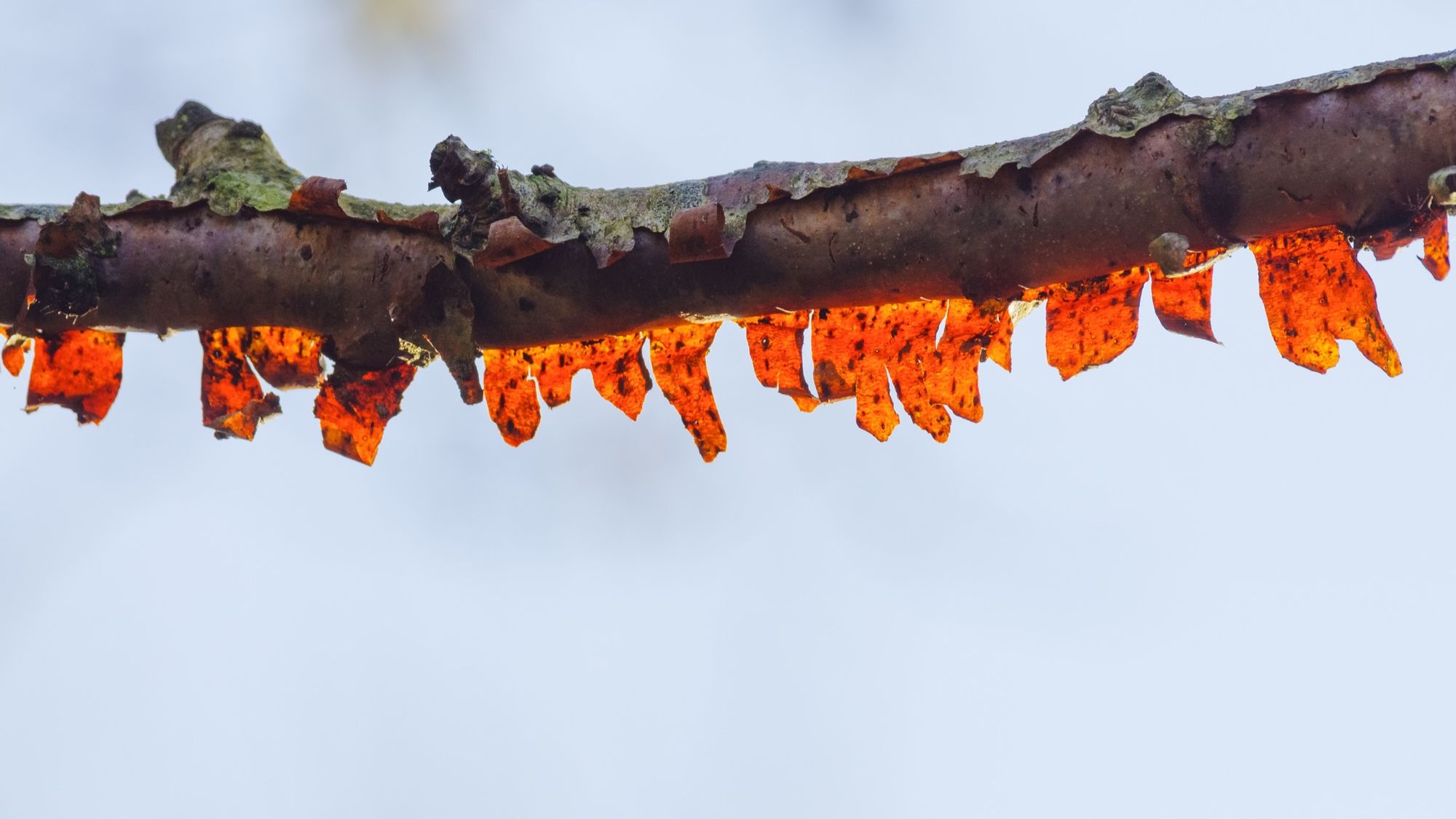
All images © Alex Roddie. All Rights Reserved. Please don’t reproduce these images without permission.
Alex Roddie Newsletter
Join the newsletter to receive the latest updates in your inbox.




